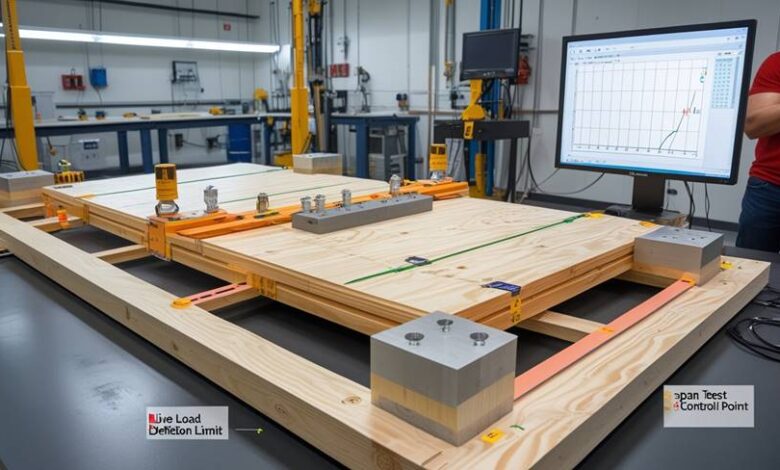Construction Panels: How They Improve Structural Efficiency

Construction panels are the unsung heroes of modern building science. From walls and floors to roofs and sheathing systems, panels serve as integrated components that deliver strength, insulation, and assembly speed dramatically improving structural performance across residential, commercial, and industrial construction.
This comprehensive guide explores how construction panels work, why they’re more efficient than traditional methods, and how they’re reshaping the future of the built environment. Covering panel types, design strategies, code compliance, energy metrics, and installation practices, this is a 3,000-word deep dive into one of construction’s most valuable systems Redbuilt.
• The Role of Construction Panels in Structural Systems
Construction panels refer to large, planar elements used in walls, floors, ceilings, and roofs. Unlike stick-framed methods, which rely on assembling individual members, panels offer a pre-fabricated or modular approach that consolidates multiple layers structural, thermal, and sometimes even aesthetic into a single unit.
- They increase structural efficiency by:
- Distributing loads evenly over wider surfaces
- Reducing point-stress concentrations
- Enhancing shear resistance and diaphragm action
- Speeding up construction timelines
- The most common types include:
- Plywood and OSB sheathing
- Structural Insulated Panels (SIPs)
- Cross-Laminated Timber (CLT)
- Magnesium Oxide and cementitious panels
- Each system has its strengths depending on the application.
- How Panels Outperform Stick Framing
Stick framing creates gaps between structural members, while panels create continuous surfaces. This increases the structure’s resistance to lateral forces like wind and seismic activity. Panels also serve as a continuous load path for transferring forces into the foundation.
A SIP wall, for example, not only bears vertical load like a stud wall but also resists racking without the need for additional bracing. In engineered testing, SIPs can outperform traditional walls by 50–60% in shear capacity.
CLT and other mass timber panels behave like monolithic slabs offering enhanced stiffness and the ability to span larger distances with less deflection. This makes them ideal for floor systems in mid-rise and high-rise buildings.
• Thermal and Energy Performance
One of the most valuable traits of construction panels is their contribution to energy efficiency. Panels such as SIPs integrate rigid foam insulation into their core, drastically reducing thermal bridging.
Compared to traditional framing, panelized assemblies can:
Reduce air leakage by up to 90%
Increase effective R-values by 30–50%
Maintain continuous insulation without gaps
Panels also create a more airtight envelope, which improves HVAC performance and indoor comfort.
Builders pursuing Passive House or Net Zero Energy certifications often favor panelized construction for its inherent thermal advantages.
• Panel Types and Their Strengths
Plywood and OSB Panels
Used in sheathing for walls, roofs, and subfloors, these are the workhorses of North American construction. They offer good nail-holding capacity, moderate strength, and cost-effectiveness.
SIPs
Combine insulation and structure. Ideal for exterior walls and roofs, especially in cold or temperate climates.
CLT
Mass timber panels used for floors, walls, and roofs in larger buildings. CLT reduces the need for interior walls and allows for wide-open interiors.
MgO Panels
Fire- and mold-resistant. Often used in humid environments or for fire-rated assemblies. Can replace gypsum and cement board in certain applications.
Each panel type is suited to specific environmental conditions and performance needs.
• Engineering Design and Structural Integration
Construction panels are typically incorporated into structural systems using engineered design tools and software. Load path analysis, diaphragm design, and connection detailing are all critical.
Designers consider:
Load transfer between panels and supports
Nailing and fastener schedules
Expansion gaps and movement tolerances
Compatibility with structural connections and hardware
Advanced modeling tools like FEM (Finite Element Modeling) allow for stress simulations across panel assemblies, ensuring code compliance and optimal material use.
• Code Compliance and Inspection Standards
Construction panels must meet International Building Code (IBC) or International Residential Code (IRC) standards for:
Structural capacity
Fire resistance
Thermal performance
Water and vapor control
SIPs and CLT panels are often subject to third-party testing and require manufacturer-specific data sheets for approval. Inspectors look for fastening patterns, panel alignment, and edge sealing.
High-performance panel systems must be paired with:
Air barrier integration
Flashing and water management details
Fire stopping and joint treatment
Following manufacturer installation protocols is critical to passing inspections and maintaining warranty coverage.
• Labor and Installation Efficiency
Panels dramatically cut labor time by simplifying the assembly process. Instead of measuring, cutting, and assembling framing, insulation, and sheathing separately, installers can use a single panel for multiple functions.
This leads to:
25–40% faster framing timelines
Fewer subcontractors and coordination hassles
Reduced error rates on site
Improved safety due to fewer ladder trips and cuts
With SIPs and CLT, entire walls or floors can be craned into place. Labor savings are especially critical in regions with trade shortages or union restrictions.
• Sustainability Metrics and Waste Reduction
Panelized construction uses materials more efficiently. Engineered wood panels make use of small-diameter trees, while waste from panel manufacturing is often recycled into fuel or other products.
Environmental benefits include:
Lower embodied carbon
Less job site waste
Better construction waste recycling rates
Reduced transportation due to fewer materials
Many panel systems qualify for green building credits. SIPs can contribute to LEED points under energy performance, while CLT may qualify under materials and resources for renewability.
• Acoustics and Comfort
Panels improve acoustic insulation by reducing air gaps and allowing for multi-layer construction.
CLT provides mass for sound attenuation in floors and walls
SIPs reduce airborne noise transmission
MgO panels block impact and vibration in floor systems
Proper sealing at joints and edge treatments prevent flanking noise and draft-related discomfort.
• Applications and Building Types
Panel systems are now common in:
Single-family homes
Multifamily and apartment buildings
Schools and institutions
Hospitals and clinics
Retail and office buildings
Modular and off-site manufactured buildings
Because of their versatility, panels adapt to various building codes, climates, and design styles.
• Future Trends and Innovation
Smart Panels
Integrated wiring, sensors, and IoT-ready ports are being built into panel systems for smart home and building applications.
Fire-Resistant and Disaster-Resilient Panels
Enhanced core compositions and coatings are helping panels meet wildland-urban interface codes and hurricane zone requirements.
Robotic Installation
Automation is accelerating panel installation in factories and on-site. Robotic arms can position and fasten panels with millimeter precision.
3D Printing and Hybrid Systems
Some systems now combine 3D-printed concrete foundations with panelized walls and roofs, forming hybrid buildings in record time.
Conclusion: Building Smarter with Panels
Construction panels represent a paradigm shift in how we design and build. Their strength, speed, energy performance, and sustainability make them a cornerstone of next-generation construction.
By embracing panelized systems, builders can streamline projects, reduce risk, and exceed performance benchmarks. Whether you’re a contractor, developer, or architect, mastering the use of construction panels opens the door to better buildings delivered faster and smarter.

